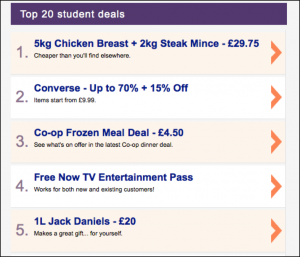According to research undertaken by Ellis-Chadwick and Doherty (2012), email marketing campaigns produce twice the return on investment than any other online marketing campaigns and are increasingly being used by businesses of all sizes. During 2011, US firms alone spent $1.51 billion on email marketing campaigns (Mohammadi et all, 2013) as small and medium sized firms began to realise the benefits of email marketing, which include low set up and distribution costs.
However, there are some disadvantages to email marketing campaigns. Firstly, there is the intimidation threat of the practice; if a customer wishes to be contacted via email, they need to ‘opt in’ and say that they have agreed to receive marketing emails, otherwise it is considered to be illegal. Secondly, there is the risk that customers chose to not open the email and either delete it or move it to a spam folder. Therefore, it is important that companies ensure that their marketing emails are sent with a purpose, and that they get the customers attention straight away with an effective subject line.
In this blog, I will be critically analysing an email that I received from ASOS, an online clothes retailer who I subscribe to.
The Subject Line
“Sorry – can we make it up to you?”
This subject line immediately caught my attention for two reasons. Firstly, I wanted to open the email to find out what it was exactly that ASOS were apologising for. Secondly, I was intrigued to know how they would be making it up to me, for example, would they be offering me a discount on my next purchase? This subject line was very effective, as it was straight to the point and it left the reader wondering what benefit they would receive if they opened the email.
Personalisation
Although I have received personalised emails from ASOS in the past, this email was addressed solely to me because it was being sent to apologise for technical issues that the website had been having.![]()
In this case, the email didn’t necessarily need to be personalised, as all customers were affected by the technical issues. However, adding personalisation to the email may have encouraged more customers to use the discount that they were offered, such as in the email below, which was sent to me by Save the Student.
Although the ASOS email was not personalised in that it was not addressed to me, it did clearly state at the top of the landing page how many points I had to spend, therefore encouraging me to visit the website to use my points (see image below).
Design and Call To Action (CTA)
Overall, I think that the design of the email is very effective. As you can see from the below image, the use of colours makes the email striking, and the little wording that there is gets the message across straight away.
This is an example of a house-list campaign email, where ASOS were offering a discount on all purchases if customers shopped within 24 hours. These emails are typically personalised for the consumer, including hyperlinks and images in order to keep the customer’s attention. As you can see from the image above, the email included two main hyperlinks, where the customer could choose to view clothing either from the sale section of the website “SHOP SALE”, or the normal section of the website “SHOP NEW”. This is also known as the Call to Action (CTA), as the intention of the email was to get customers to visit the website and use the discount.
Although the email was effective in encouraging customers to visit the website using the links provided, it may have led to some customers choosing to unsubscribe from ASOS’ emails. When I opened the email, I had not been on the ASOS website for a while, and therefore I was unaware that the website had been experiencing any technical issues. Therefore, I was being informed of a problem that I was not even aware off. Although this would not deter me personally from shopping with ASOS again, some customers may have been irritated that they received an email regarding a problem they did not know existed. Additionally, the discount was being offered on all clothing, which may deter some customers, who would rather be able to follow a hyperlink straight to clothes which they like or usually purchase. For example, in the personalised Save the Student email mentioned above, there were 20 hyperlinks which took you to specific deals (see image below). This may encourage customers to follow the hyperlinks because they are being informed of specific deals, rather than being offered a discount across the whole website.
ASOS, was the apology necessary?
Overall, the subject line and the bold, colourful body of the email were the reasons that this email marketing campaign was effective. The use of an open-ended question for the subject line ensured that customers opened the email to see what ASOS were apologising for, and once the email had been opened, it was clear that an attractive discount was being offered.
References
Ellis-Chadwick, F., & Doherty, N. F. (2012) Web advertising: The role of e-mail marketing. Journal of Business Research, 65(6), 843-848
Mohammadi, M., Malekian, K., Nosrati, M., & Karimi, R. (2013) Email Marketing as a Popular Type of Small Business Advertisement: A Short Review. Australian Journal of Basic and Applied Sciences, 7(4), 786-790



